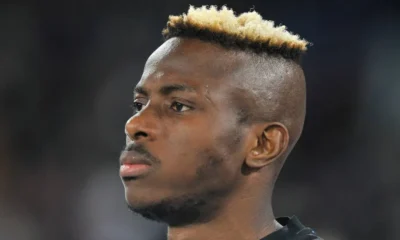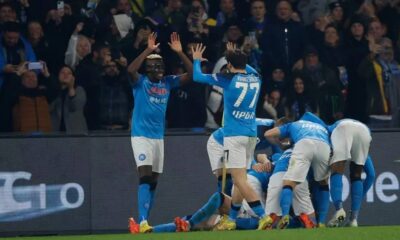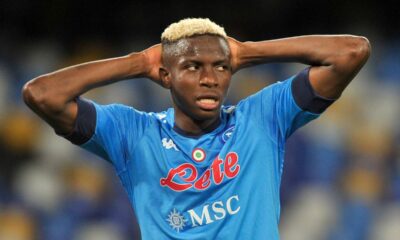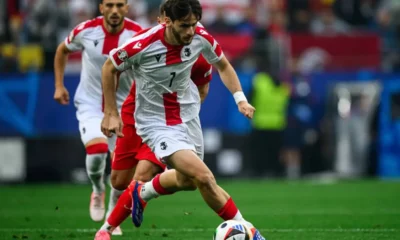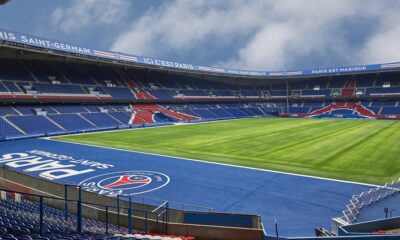Football
Notes from Naples: What does the round ball mean for the city of chaos and pizza?
Naples is a very special place indeed. It’s a city you either hate or love. Many Italians don’t like this city and consider it an embarrassment to their country. This is not so surprising, as the city itself is more reminiscent of an African or South American metropolis than the rest of Italy.
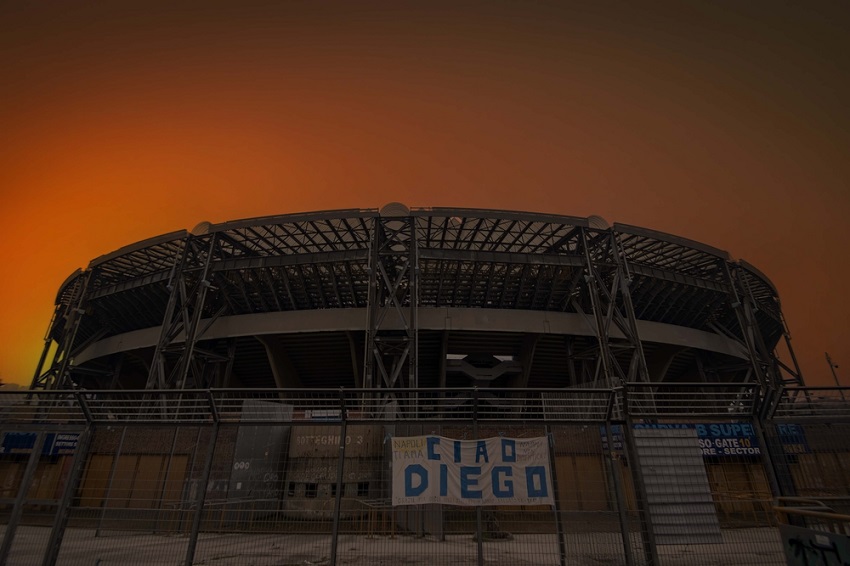
Naples is a very special place indeed. It’s a city you either hate or love. Many Italians don’t like this city and consider it an embarrassment to their country. This is not so surprising, as the city itself is more reminiscent of an African or South American metropolis than the rest of Italy. However, I personally fell in love with the city during my visits in a similar way that Neapolitans fell in love with an Argentine footballer some time ago.
The first thing that strikes you in the city, nestled beneath the volcano Vesuvius, is the atmosphere of the city. Naples is known for its chaos, pizza and smell. Yes, it really does get to you in some parts.
But what you’ll notice almost immediately are the blue decorations supporting the local football club, SSC Naples. And no, there’s no game on today. These decorations have become part of the city.
So as you walk around town, apart from the often intractable traffic situations, you’ll also notice the face of a black-haired man depicted by local artists in haloed street paintings. You can guess who this face belongs to. It is none other than Diego Armando Maradona. No one here calls him anything but “Dio”, which means “God” in Italian.
It was Maradona who conquered Naples like no one before him. After a less-than-successful stint at Barcelona, he moved here in 1984. Naples at that time was a small provincial club without much success. With the arrival of Maradona, the club almost immediately became one of the favourites in the Italian league, which many people at the time considered to be the best ever.
During Maradona’s seven-year era, Naples won two Italian titles, one League Cup and in 1988/89 the UEFA Cup. Fans immediately identified with the player wearing the number ten and he became their hero. It was he, a boy from the slums of Buenos Aires, who brought unprecedented success to Italy’s poor south.
After a few hours, I decided I needed to fit in with the local boys. So I decide to visit Lorenzo’s stall, which sells football shirts. I tell him I’m from the Czech Republic. He immediately thinks of Pavel Nedved, who he says was a great player. It’s just a pity, he says, that he played for Juventus.
But he singled out another player. This was Marek Hamšík, the representative of our Slovak neighbours, who captained Napoli. From his words, one begins to understand the influence footballers have on the mood of the population in this city. I’ll take one blue jersey from Lorenzo. You can guess what number and name is printed on it.
I continue on to the beach, where children play football every day. Everyone is slowly realising that the youth of Naples is starting to have new heroes. I see a lot of kids playing Osimhen the Nigerian and Kvaratskhelia the Georgian.
These boys and girls dream of one day wearing the blue jersey. I can tell that they are playing on this duo both by the jerseys and by the shouts of “Kvaradona”, which is supposed to bring Kvaratskhelia closer to Maradona. One of the kids even has a homemade replica of the mask Osimhen wears after his head injury.
It’s afternoon and I’m under Vesuvius. The match against Sassuolo is about three hours away, but since the morning I have been aware of a blue army of fans both in the city centre and just below Vesuvius. When I step on the volcano, I can hear the game on several radios.
Suddenly, the announcement is made that Kvaratskhelia has scored and Naples are 3-0 up after two previous goals by Osimhen. The Neapolitans are so ecstatic that they stop working. If we wanted to, we could walk into Vesuvius without tickets as the local staff are completely out of touch with reality during the joy.
Naples won 4-0 against Sassuolo that night and the city celebrated long into the night. Wine was flowing, pizza was being handed out, “Quaradona” was being chanted and tourists were in shock. I hear an American standing behind me say in amazement that he has never seen anything like it in his life.
At the time of writing, Naples is virtually assured of the title. With six rounds to play, the team needs only one more point.
The last time Maradona’s side celebrated the title in Naples was 33 years ago. Whether the group around Osimhen and Kvaratskhelia lift the cup this weekend or next weekend, one thing is certain.
If you’re looking for a place to go during the summer holidays, I recommend Naples and the surrounding area. After all, the celebrations will be going on there until at least next season.

